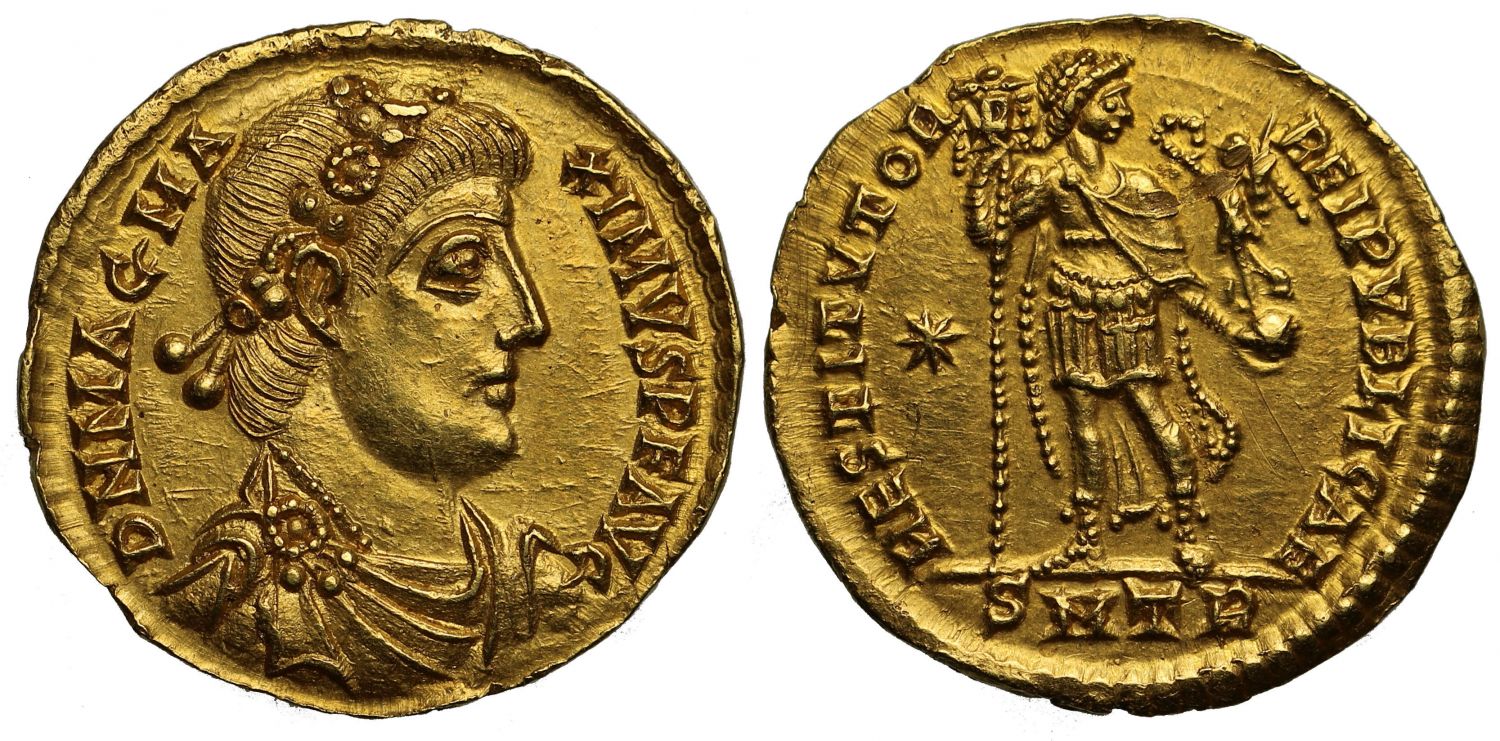The Solidus of Magnus Maximus, minted between 383 and 388 AD, is a gold coin that provides a fascinating glimpse into the turbulent period of late Roman history. Preserved at Dumbarton Oaks, this artifact represents not just currency but a powerful symbol of the ambition, authority, and eventual downfall of one of Rome’s most enigmatic figures, Magnus Maximus.
Magnus Maximus and His Bid for Power
Magnus Maximus rose to prominence as a military commander before claiming imperial power. In 383 AD, following the assassination of Western Emperor Gratian, he seized control of Britain, Gaul, and Spain. Declaring himself emperor, he established Trier as his capital and sought to consolidate his authority through military campaigns and political maneuvering.
The minting of his solidus at Trier was a calculated act of legitimacy. Coins were not just economic tools; they served as propaganda to communicate the emperor’s sovereignty and divine right to rule. By placing his image on the solidus, Magnus Maximus signaled his intent to be recognized as a rightful emperor.
The Solidus: Artistry and Propaganda
The solidus exemplifies the intricate artistry and political messaging of late Roman coinage.
- Obverse Design: The obverse of the coin typically features a portrait of Magnus Maximus adorned with imperial regalia, including a laurel wreath or diadem. These elements emphasized his role as a leader chosen by the gods and aligned with Roman tradition.
- Reverse Design: The reverse often depicted symbols of victory, stability, and divine favor, such as the goddess Victory or the emperor seated on a throne. These motifs reinforced his claims to legitimacy and power during a time of division within the empire.
Every detail of the coin was carefully chosen to project strength and continuity, appealing to the loyalty of Roman citizens and military forces alike.
Defeat and Downfall
Despite his initial success in gaining control of Western Roman territories, Magnus Maximus faced insurmountable challenges. His ambitions eventually led to conflict with Theodosius I, the Eastern Roman Emperor. In 388 AD, at the Battle of the Save, Theodosius decisively defeated Magnus Maximus. Captured and executed shortly afterward, Magnus Maximus’s reign ended abruptly, highlighting the precarious nature of usurpation in the Roman Empire.

Historical Significance
The solidus of Magnus Maximus holds immense historical value, shedding light on the political and cultural landscape of the late 4th century.
- Propaganda Tool: The coin serves as an example of how rulers used currency to legitimize their power and communicate their ideology across vast territories.
- Economic Insight: The coin also reflects the economic practices and administrative priorities of Magnus Maximus’s regime, with Trier playing a critical role as a minting center.
- Cultural Artifact: As a piece of craftsmanship, the solidus demonstrates the artistic sophistication of Roman coinage and its enduring influence on numismatic history.
Conclusion
The Solidus of Magnus Maximus is more than a relic of monetary history; it is a testament to the ambitions and vulnerabilities of a man who momentarily shaped the Roman Empire’s fate. Preserved at Dumbarton Oaks, this coin remains a vivid reminder of the power struggles, artistic achievements, and historical complexities of late antiquity. Its enduring legacy continues to captivate historians and enthusiasts, offering a tangible connection to the rise and fall of one of Rome’s most intriguing figures.
